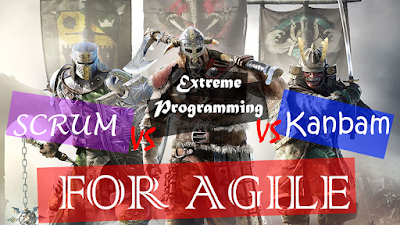Scrum vs Kanban vs Extreme Programming
Scrum, Kanban, and Extreme Programming (XP) are all Agile methodologies, each with its own set of principles and practices. While they share the common goal of delivering valuable software in an iterative and flexible manner, they differ in their approaches and the specific practices they emphasize. Here's a brief comparison of Scrum, Kanban, and XP:
Scrum:
- Roles: Scrum defines specific roles, including Product Owner, Scrum Master, and Development Team.
- Time-Boxed Iterations: Work is organized into fixed-length iterations called sprints, typically 2 to 4 weeks long.
- Planning: Sprint Planning is conducted at the beginning of each sprint to determine the work to be done.
- Ceremonies: Scrum includes ceremonies like Sprint Planning, Daily Standup, Sprint Review, and Sprint Retrospective.
- Artifacts: Key artifacts include the Product Backlog, Sprint Backlog, and Increment.
Kanban:
- Continuous Flow: Kanban focuses on a continuous flow of work with no fixed time-boxed iterations.
- Visual Board: Work items are represented on a visual board with columns representing different stages of the workflow.
- Work in Progress (WIP) Limits: Limits are set on the number of items allowed in each stage to optimize flow and reduce bottlenecks.
- No Prescribed Roles: Kanban does not prescribe specific roles, allowing for a more flexible team structure.
- Continuous Improvement: Encourages continuous improvement of the process.
Extreme Programming (XP):
- Pair Programming: Two programmers work together at one workstation, switching roles regularly.
- Test-Driven Development (TDD): Developers write tests before writing the code to ensure code quality.
- Continuous Integration: Frequent integration of code changes to a shared repository with automated builds and tests.
- Small Releases: Frequent, small releases of the software to gather feedback early.
- Customer Involvement: Close collaboration with customers and stakeholders throughout the development process.
Comparison:
- Flexibility: Kanban is the most flexible, allowing for continuous flow and adapting to changes in real-time. Scrum has fixed sprint durations, while XP has a set of practices that are more prescriptive.
- Roles: Scrum defines specific roles, while Kanban and XP are more flexible in team structure.
- Planning: Scrum and XP involve fixed-length iterations and planning, while Kanban focuses on continuous delivery without specific planning events.
- Testing: XP emphasizes test-driven development, ensuring that tests are written before the code, while Scrum and Kanban do not enforce specific testing practices.
In summary, the choice between Scrum, Kanban, and XP depends on the project's specific needs, team preferences, and the organization's culture. Some teams also blend elements of these methodologies to create a customized Agile approach that fits their unique requirements.

No comments:
Post a Comment